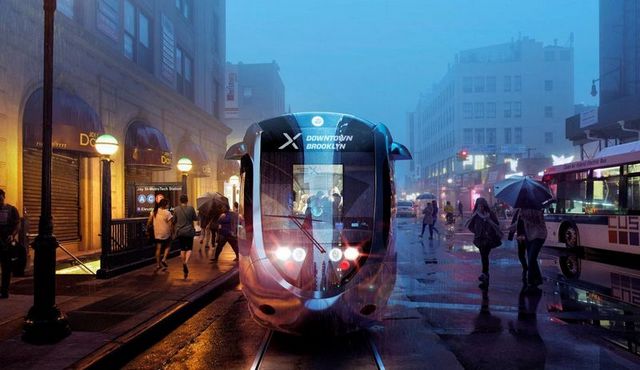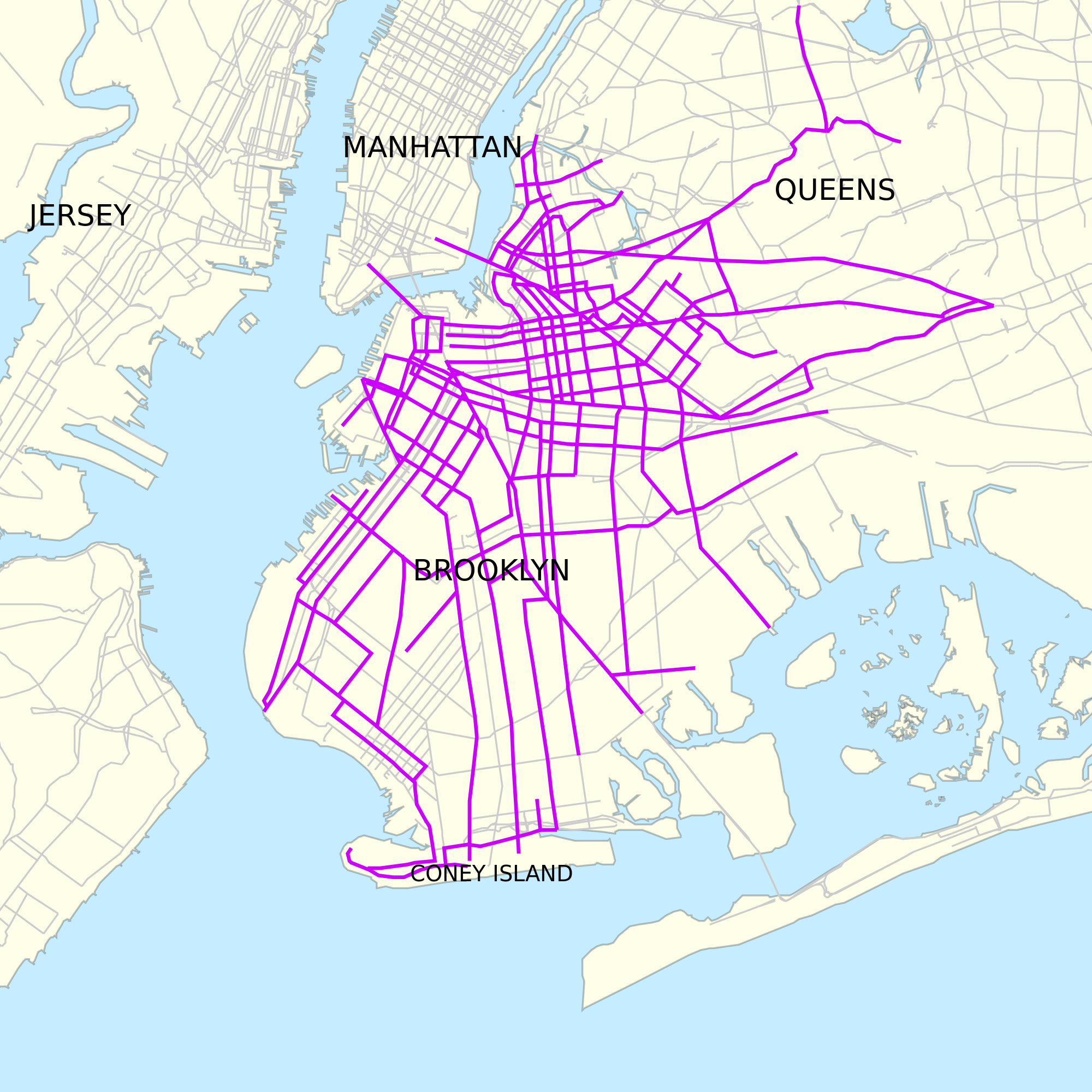 Image via Friends of the Brooklyn Queens Connector
Image via Friends of the Brooklyn Queens Connector
In his third annual State of the City address last Thursday, New York City Mayor Bill de Blasio put forward a $2.5 billion dollar plan to install a public transportation project connecting Brooklyn and Queens along the waterfront. The plan did not propose the incorporation of new buses or subways, instead he wants to bring the streetcar back. Here’s a recap of the history, plans, pros and cons of the streetcar plan.
History
It was the end of October 1956 when the last three trolley lines in Brooklyn were finally decommissioned by the city. Since then the notion of streetcars in New York City has been long forgotten by the city’s residents and local government, apart from the abandoned trolleys that once sat on the Red Hook waterfront. New York City was at one point bustling with streetcars not just in Brooklyn but also in Manhattan and Queens. At its peak the city’s complex streetcar system had over 100 lines, but the initial success of overground transport didn’t last long.
New York Railways, a private company invested in most of the city’s streetcar infrastructure and it could not compete with its rival National City Lines. National City Lines owned the majority of buses in the city. During a time of increased investment in oil and automobiles, it gained a competitive advantage. New York Railways had pledged to charge its customers a toll of just a nickel, but with rising operating costs and economic downturns the company went bankrupt. Streetcars in New York City remained predominantly a distant memory until last week when the city announced plans for a new Brooklyn-Queens streetcar route (BQX).
 Original streetcar line that ran through Queens and Brooklyn connected the two boroughs, and Manhattan. Map in creative commons from Sharemap.
Original streetcar line that ran through Queens and Brooklyn connected the two boroughs, and Manhattan. Map in creative commons from Sharemap.





